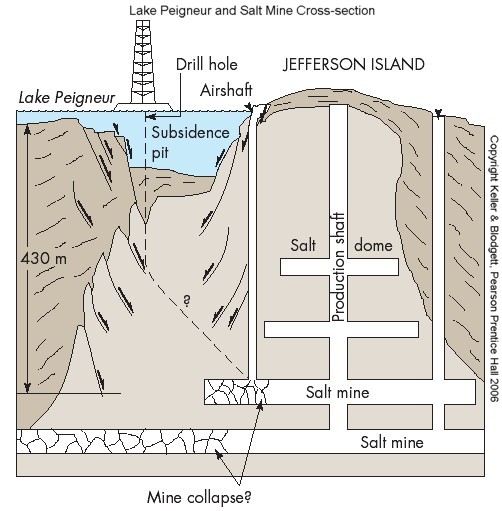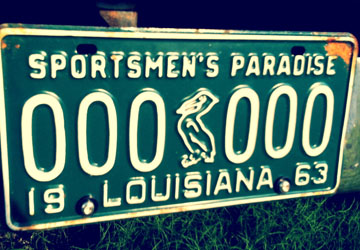 |
| Jelly Elliott |
Joseph Rodney “Jelly” Elliott, Jr. was born in Crowville, Louisiana on June 3rd, 1911.2 He was the son of a farming family, James R. Elliott and Winnie Lu Poland of Georgia. Originally from the Elliott family of Mississippi and South Carolina, they came with their parents around 1900 and settled in Bossier parish, not far from Shreveport. His early life was shaped by his family constantly moving throughout the state. By 1920, the family, James, Winnie, Jelly and his brother Guy, had left their farming community in the Shreveport area to find work in the oil fields of Calcasieu, however this didn’t last. By 1935, Jelly had moved back north around Haynesville and married Delora Minnie Jinks from Lillie, Louisiana. Her mother, Nellie, was a native of Arkansas. His parents moved to Shreveport briefly working as farmers until they settled in Oak Grove in 1940.
 |
| Jelly Elliot (right) |
By 1940, Jelly and his wife made their way to Blackfish, Arkansas, where his daughter Shirley June was born and he was looking for work as a ”showman and blackface comedian”. He moved to Alexandria soon after 1946, running a honky-tonk bar, playing odd engagements and broadcasting from Alexandria’s KALB. He formed a group, Jelly Elliott and his Singing Cowboys, opening up for acts such as Doug Autry; Gene’s brother.10 By early 1947, he was traveling all over the state to perform, even as far south as Abbeville.9 In May of 1947, he led his group, playing at the Menard Memorial High School in Alexandria for a Navy Reserve program. By July, he was on the radio with the help of station manager Willard Cobb and program director Jerry Sperling. His show opened with his jingle: “Sing, cowboy, sing, sing, cowboy, sing, you’ll be happy all day long, if you start it with a song—sing, cowboy, sing.”6 He stated,
“If I wasn’t on when you turned on your radio, I would be in a few minutes.”1
 |
| Jelly's Club |
When asked how he got his nickname “Jelly” he responded:
“They call me that because I used to get in so many jams!”.1He even bought a place called the Old Desoto Club and sponsored a contest to find a proper name for it. The name Jelly’s Club was selected. Jelly had started the place with a bang.6 When the radio station and Oddfellows lodge considered producing a Saturday country music show, they received letters of support for it. Jelly was chosen to head the program at the Jimmy Thompson’s arena. On opening night the house was packed with the best musicians and entertainers. The Hillbilly Jamboree was a success for a few months, however, on one occasion, the promotors forgot to pay the musicians. They boycotted the show and the jamboree was over for Jelly.6
 |
| Jelly Elliott, 1947 |
Still traveling, he’d be called to play bass fiddle on radio shows on KALB, KWKH in Shreveport and KTRM in Beaumont. He traveled around the area, playing music, selling baby chicks, garden seeds, farm implements, and used cars, and occasionally made his way down as far south as Lake Charles.4 There, he met Cajun fiddler Abe Manuel and together, Jelly’s group traveled with Abe to New Orleans that year in order to record two songs, a Cajun French tune, called “Ville Platte Waltz” and a string band song called “Devil’s Blues”. They were issued on the vanity label called Magnolia and the release was available by October that year.
 |
| Jelly Elliott, Gene Autry, Doug Autry |
By 1948, he was working at Jones Bar in Lake Charles at night and playing on KPLC during the day. Moving back north, he formed a musical group out of El Dorado, Ark. called the Singing Cowboys with Slim Watts and Robert Shivers. There, he met country music star Lefty Frizzell and the two seemed to hit it off. Lefty continued to work with him for a while in 1948, traveling in and out of Louisiana and Arkansas. Throughout the years, he’d perform in tent shows and his group would continue singing on the radio. He had played with the likes of Gene Autry, Hank Williams, Tex Ritter, and Bob Wills.3
Suddenly, things changed in later 1948. He states:
“I was working at a nightclub in Leesville. The owner and I were friends and we used to like to go bird hunting, which wasn’t easy with my schedule. We would play until 2 a.m. and then race into Alexandria to change into our hunting clothes and get our dogs and guns. And we would always take a pocketful of seeds to plant for the birds.”4
 |
| Jelly Elliott |
But upon arriving at the woods for the hunt, Elliott was shocked to discover that one of his favorite spots had been torched by arsonists. He ranted and raved about the injustice all the way back to KALB for one of his shows.
“I got on the air and started raising hell about the woods being burned up. What I didn’t know was at that time, Clint Davis, who was the head of the U.S. Forestry Commission, was touring the area, inspecting forest fire damage. He had his assistant Jim Mixon with him looking over the woods.”4Davis and Mixon had been trying to come up with a concept to help promote anti-forest fire sentiment. Although around the same time the “Smokey Bear” concept was born with the rescue of a bear cub from a fire. Officials considered it too Madison Avenue-based for rural folk and farmers. So when the two officials heard Elliott squawking about the fire, Davis told Mixon, “There’s the answer to your fire problems.” Elliott moved the band to Beaumont around the end of summer 1949 and most of the band would stay with Slim Watts in Beaumont.11 He occasionally made radio appearances throughout the year.
 |
| Jelly Elliott and band |
Jelly was also feeling the stress of his lifestyle affecting his health and his family. Life was rough on the road, particularly with the fame the national exposure brought Elliott and his family. There was a strong temptation to go to Nashville and try to make it big on WSM, which broadcast the Grand Ole Opry. Already having played at the Opry, he lamented:
“I would have been a little fish in a big pond”.4
 |
| Jelly Elliott |
Meanwhile, Davis and Mixon worked out a plan and wrote up a contract for Jelly. Henry Whede Jr of the Advertising Council, relates that Elliott agreed to help by turning his talents to forest fire prevention the way he sold merchandise.5 He would create unique, short audio jingles which promoted safe forest living and survival.3 He stated:
“Everybody loves the woods. It’s funny but it’s true. I guess it’s the animal instinct in us.”8
 |
| Ad for the Knotheads |
Every year, radio technicians from the Department of Agriculture would visit his rural home and make these records with his group he called “The Three Knotheads” in order to broadcast them national wide. He had himself with Deacon Anderson on steel guitar, Slim Watts on rhythm guitar and Robert Shivers on fiddle.4 At one point, it included guitarist and singer Lou Millet, Herman Populus and Jack Youngblood.7 From the start, the show was a hit in the southeast, where the program was aimed. But, his fame spread rapidly and Jelly Elliott became popular in all parts of the country. Davis added that the ”tone of letters from listeners indicates that Elliott’s down-to-earth, somewhat salty approach to the forest fire prevention campaign really is getting across.”
 |
| LIFE Magazine, 1952 Jelly Elliott |
Elliott stated that his programs are “unrehearsed and unpredictable” and uninhibited. Known for cursing on the radio station during his programs, the recordings had to be edited now and then.5 He was considered the “Number One” propaganda vehicle for public education about the danger of forest fires. In fact, in 1951, he was awarded first prize in the annual award given by the Institute for Education by Radio-TV. In 1952, while living near Haile, Louisiana, LIFE magazine visited the radio and TV personality and wrote an article about his career.1 By 1956, his radio records were pressed on LPs and appeared on Radiodisc Electrical Transcription records. Some were entitled “My Pal, Smokey Bear”, "When Forests Burn" and "Burning and Grazing the Woods Don't Pay". These were 16 inch clear red vinyl studio master records, too big to play on a conventional turntable.
They are stamped with the face of Smokey the Bear. About 20 or so records were created and they were broadcast from as many as 4000 radio stations.3 Elliott was becoming so popular that often when he provided entertainment for political campaigns, he would find candidates pulling at one of his trouser legs from below the stage. “Tell them it’s me running for office, Jelly. They think it’s you” stated a worried Avoyelles Parish sheriff candidate. Today, many of these recordings can be found at the Texas A&M in the Forest Service Radio Broadcast Collection.
The roadshows continued, with Elliott often working seven nights a week. He was his own manager, press agent and advance man. The strain started to mount. One day in Bunkie, Elliott said, he finally gave in to a crony who was always trying to get him to down a shot of booze.
He suffered from a nervous breakdown and developed an ulcer. He retired from the music and retreated back to the area around the Ouichita river, farming and raising hogs.1 Once asked when he was going to come back to work, Jelly drawled:
By January of 1956, he quit recording all together and moved to Plaquemines Parish where he worked as a boat operator. Eventually his entire family moved there and yet, he found time to work as an entertainer at La Louisiane Club near Canal Street. During the day, he raised nightcrawlers for this forays to secret Plaquemines fishing spots, with building birdhouses and other projects.3 Delora died on July 4th, 1991 in Monroe after living for years in the New Orleans area. Jelly died on January 24th, 1996 and is buried in Oak Grove, Louisiana along with his wife and his mother.2
“Then it was a half pint, then a pint, then before long a fifth a day. It took me a long time to shake that but I finally did. You’ll find that a lot with musicians.”4
He suffered from a nervous breakdown and developed an ulcer. He retired from the music and retreated back to the area around the Ouichita river, farming and raising hogs.1 Once asked when he was going to come back to work, Jelly drawled:
“Just as soon as the fish stop abitin’”.8
By January of 1956, he quit recording all together and moved to Plaquemines Parish where he worked as a boat operator. Eventually his entire family moved there and yet, he found time to work as an entertainer at La Louisiane Club near Canal Street. During the day, he raised nightcrawlers for this forays to secret Plaquemines fishing spots, with building birdhouses and other projects.3 Delora died on July 4th, 1991 in Monroe after living for years in the New Orleans area. Jelly died on January 24th, 1996 and is buried in Oak Grove, Louisiana along with his wife and his mother.2
- LIFE Magazine. May 12, 1952.
- Kilbourne Cemetery
- “Jelly Elliot” by Lawrence Zeilinger. West Bank Guide. August 10th, 1983.
- “A Man Named Jelly Fights Forest Fires” by Wayne Oliver. Post. May 31st, 1951.
- “Cajun Dancehall Heyday” by Ron Yule
- “Jelly Elliot…Puzzling Figure in Cenla Music” by Troy DeRamus. Alexandria
- “Hillbilly Records to Aid In Forest Fire Prevention”. Monroe Morning World. November 15th, 1951
- Magazine article. February 1950.
- Abbeville Meridional. Feb 8, 1947
- Hopestar. Mar 25, 1946
- Billboard Magazine. October 1, 1949
























